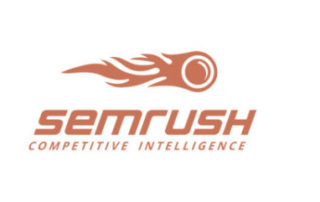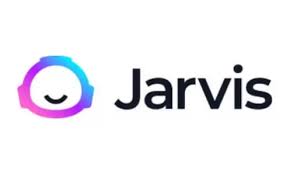
What is Inbound Marketing?
Inbound marketing is a customer-centric approach that focuses on attracting and engaging potential customers through valuable and relevant content. Unlike traditional marketing methods that interrupt potential customers with unsolicited messages, inbound marketing prioritizes providing value and building strong connections attracting potential customers. By creating a seamless and enjoyable buying experience, businesses can attract potential customers naturally and foster long-term relationships.
Definition of Inbound Marketing
Inbound marketing is a holistic marketing methodology that revolves around creating valuable experiences tailored to potential customers. This approach integrates various marketing strategies, including content marketing, search engine optimization (SEO), and social media marketing, to attract, engage, and delight customers. The ultimate goal of inbound marketing is to drive business growth and revenue by nurturing leads and converting them into loyal customers.
Inbound vs. Outbound Marketing
Inbound marketing is often contrasted with outbound marketing, a more traditional approach that involves pushing products or services onto potential customers through interruptive methods like TV commercials, print ads, and cold calls. While outbound marketing aims to reach a broad audience quickly for immediate sales, inbound marketing focuses on building brand loyalty and providing value to keep customers coming back. Inbound marketing is permission-based, meaning it attracts customers who are genuinely interested in the content and solutions offered.
Advantages of Inbound Marketing
Inbound marketing offers several advantages that make it a preferred choice for modern marketers:
- Building Brand Loyalty and Customer Retention: By consistently providing valuable content, businesses can build trust and loyalty among their customers.
- Providing Value to Potential Customers: Inbound marketing focuses on addressing the needs and pain points of potential customers, offering solutions that resonate with them.
- Creating a Seamless Buying Experience: A well-executed inbound marketing strategy ensures a smooth and enjoyable journey for customers, from initial contact to purchase.
- Increasing Customer Satisfaction and Loyalty: Satisfied customers are more likely to become repeat buyers and brand advocates, spreading positive word-of-mouth.
- Encouraging Word-of-Mouth Marketing: Happy customers are more likely to share their positive experiences with others, amplifying the reach of the brand.
Creating an Inbound Marketing Content Strategy
Inbound Marketing Content Strategy George Grant 2024-01-28T03:22:51+00:00
This article aims to guide readers in creating a successful inbound marketing strategy, focusing on attracting potential customers through tailored content marketing channels to generate leads, generating leads, and organic traffic ultimately impacting sales and revenue.
“Content Marketing” is a type of marketing where companies produce and publish valuable information to attract potential customers. By focusing on the need to always create valuable and engaging content first, businesses can significantly improve their own search results and visibility and connect more effectively with their audience. Content marketing helps businesses build their brand and increase sales through addressing audience questions, marketing triggers, and barriers to action, ultimately showcasing solutions and establishing trust.
Appearing in search engine results is crucial for enhancing online visibility and attracting organic traffic from search engines.
A content marketing strategy is a plan for producing and publishing valuable, relevant information that educates readers about your company and its offerings. It’s also a plan for measuring success.
The goal of a content marketing strategy is to create content to drive profitable customer action. This could mean anything from increasing website traffic or boosting social media followers. A successful content strategy is crucial for attracting and delighting customers and retaining new customers by aligning customer engagement with business goals, understanding audience preferences, and creating valuable, relevant content.
The best content marketing strategies are based on providing useful, valuable information that leads to an improved experience for both our website visitors, and customers.
If you want to learn more about how to create a successful content marketing strategy, keep reading! Here are some tips:
1 – Know Your Audience
Before you can start writing any content, it’s important to understand who your target audience is. What do they care about? Why would they read your blog post?
2 – Create Relevant Content
Once you have identified your target audience, you need to make sure your content aligns with what they care about. You might find that certain types of blog posts will perform well, while others don’t generate much interest.
3 – Focus On Quality Over Quantity
You may think that quantity is key when trying to get people interested in your content, but this isn’t always true. In fact, high quality content is often the most effective way to engage your audience. If you’re not confident in your skills, then focus on creating high-quality content over a decade of time.
4 – Use Social Media To Get The Word Out
Social media platforms like Facebook, Twitter, LinkedIn, Instagram and Pinterest help you reach out to your current and prospective customers. These sites allow you to share links to blogs, articles, videos and other forms of content.
5 – Measure Success
When you launch your content marketing campaign, you’ll want to measure its success. How many shares did you receive on blog and social media posts? How many comments did you receive? Did your site get more visits than usual?
6 – Keep Improving
As you continue to grow your content marketing efforts, you’ll notice that your performance will improve. Once you’ve mastered one topic, you can move onto another.
7 – Be Creative
Creativity is the lifeblood of good content marketing. Don’t just write the same page about the same topics every day. Try new things, experiment with different content formats and styles, have fresh content ideas and use images and graphics to convey your message.
8 – Stay Organized
It’s easy to lose track of all the content you’ve created. Make sure you stay organized so you can easily access everything you’ve written.
9 – Share Your Work With Others
Sharing your work with others is a great way to gain exposure. When you collaborate with other bloggers, you can promote each other’s and create content together.
10 – Have Fun
Content marketing shouldn’t feel like hard work. If you enjoy what you’re doing, you’ll be motivated to produce more.
Why Marketers Need a Content Strategy
A content strategy is essential for marketers to achieve their marketing goals and drive business success. It helps attract and engage a target audience, increase brand awareness, and support overall business objectives. A well-defined content strategy ensures that everyone on the marketing team understands the overarching goals and specific objectives of the business, leading to more cohesive and effective content marketing campaigns and efforts.
Aligns Team on Goals and Objectives
A content marketing strategy aligns the team on goals and objectives, increasing the chances of achieving tangible results. It acts as a guiding compass, directing teams towards topics and content formats that align with business goals. By having a clear content strategy, marketers can ensure that their content is consistent, relevant, and valuable to their target audience. This alignment not only enhances the effectiveness of the digital marketing’ efforts but also fosters collaboration and synergy within the team.
By following these guidelines, the new sections will seamlessly integrate into the existing article, providing additional value and insights while maintaining consistency in tone, style creating content, and structure.
Example of a Successful Content Marketing Strategy.
There are many examples of successful content and inbound marketing strategies out on the web. However, we really admire Mike Stelzner. He is perhaps one of the most successful content marketers on the web. He has built a multi-million dollar business through Social Media Examiner by unleashing useful tons of free content and just educating and helping people. This approach is a prime example of how effective inbound content marketing and marketing strategies can create a self-sustaining lead generation loop for businesses, leveraging popular tactics to attract and engage audiences. I think you’ll enjoy this short video interview that Mark Schaefer conducted with Mike Stelzner about Content and inbound Marketing work and the strategies that he has applied at the Social Media Examiner.
Example of a Successful Content Marketing Strategy.
There are many examples of successful content marketing strategies on the web. However, we really admire Mike Stelzner. He is perhaps one of the most successful content marketers on the web. He has built a multi-million dollar business through Social Media Examiner by unleashing useful tons of free content and just educating and helping people create a content themselves. I think you’ll enjoy this short video interview that Mark Schaefer conducted with Mike Stelzner about Content Marketing and the strategies that he has applied at the Social Media Examiner.
DIFFERENCE BETWEEN INBOUND MARKETING AND CONTENT MARKETING
“Inbound Marketing” typically refers to an inbound marketing strategy that focuses on creating awareness of the brand, turning leads into customers, and nurturing those leads by offering valuable content and interactions, rather than marketers having to go out to get prospects’ attention. Further, marketers typically think of content and email marketing campaigns as a subset of their inbound marketing strategies. That’s because inbound marketing MarTech platforms often include functionality for marketing automation and email marketing within their core platforms. “Content Marketing” on the other hand, is the process of developing and sharing relevant, valuable, and engaging content to a target audience with the goal of acquiring new customers or increasing business from existing customers.
“Outbound Marketing” is a traditional, product-centric approach digital marketing that actively pushes messages to a broad audience. This method includes tactics like TV commercials, print ads, and direct mail. A notable example is Coca-Cola’s ‘Share a Coke’ campaign, which effectively used outbound strategies to engage a wide audience and boost sales.
At Connected Markets, perhaps the most significant value we provide clients is to help them develop and apply an effective combined inbound/content marketing strategy for their business. A strategy that outlines the critical tactical steps for the creation of useful interesting content that is needed to generate leads, drive sales, and develop their brand. Our services include audience and market research, to help determine what content types and tactics will be most effective for your brand, the development and tracking of content marketing tactics, content creation and editorial plans, outsourced content creation, and ongoing competitive, keyword research and tracking help to decipher what content is working best, and what content is most effective for your market and brand.
Inbound marketing is a type of marketing that focuses on attracting customers by offering them free information. This type of marketing is also known as lead generation or the lead generation or nurturing. There are several ways to implement inbound marketing tactics into your business. Some examples include:
- Blogging – By regularly blogging, you create an online hub where customers can go for helpful tips and advice.
- Guest posting – By inviting guest authors to publish their own content on your website, you give readers something interesting to read.
- Podcasting – By recording audio interviews with industry experts, you become a thought leader in your niche.
- Infographics – By creating visual representations of data, you increase engagement and cut through the clutter.
- Case studies – By sharing real stories from satisfied customers, you show how your product works.
- Email newsletters – By sending regular emails filled with useful information, you keep customers up-to-date.
- Online courses – By providing educational resources for free, you attract new students who may have never considered working with you before.
- Lead magnets – By giving away useful files such as white papers, cheat sheets, checklists, etc., you encourage leads to sign up for your email list.
- Social media ads – By running social media campaigns, you target specific audiences and generate interest in your company.
- Websites – By building high-quality websites, you establish yourself as an authority in your field.
- Search engine optimization (SEO) – By optimizing your website to rank higher in search engines, you increase traffic and make it easier for visitors to find you.
- Website design and Accessibility – By designing attractive accessible websites, you offer a better user experience.
- Video production – By making videos that explain your services, you engage viewers and build trust.
- Webinars – By hosting informative webinars, you share knowledge with your audience.
- Repurposing & Cross-promotion – By repurposing old materials, you save time and money while increasing your brand awareness. By promoting your partners’ businesses, you expand your customer base.
Incorporating a comprehensive inbound strategy is crucial, emphasizing the importance of setting specific and measurable objectives to ensure the alignment of marketing and sales teams, and focusing on SEO and creating valuable content and creation tailored to the target audience’s needs.

The HubSpot Flywheel

HUBSPOT – OUR RECOMMENDED INBOUND MARKETING PLATFORM
A successful content marketing program requires significant investment in content creation and content promotion. Inbound Marketing platforms such as our top recommended platform, HubSpot, can often simplify efforts and improve online marketing ROI by automating several aspects of content creation, content distribution, content promotion, SEO, advertising, lead capture, relationship building, selling, landing pages, and analytics/reporting.
Connected Markets is a HubSpot Certified Solutions Partner.
In addition to assisting clients with best-practice content marketing strategy, we often assist clients with HubSpot platform implementations, including the HubSpot Marketing Hub, Sales Hub, Service Hub, and CMS Hub, and Operations Hub. Additionally, we have technical resources to assist with the integration of HubSpot-supported apps like SalesForce, LinkedIn Sales Navigator, Google Ads, Gmail, Google Calendar, Google Search Console, LinkedIn Ads, Facebook Ads, Drift, and LuckyOrange.
Additional Inbound Marketing platforms we have experience with include Eloqua, Pardot, ActiveCamapign, Marketo, Optify, and Ontraport.
FAQs – INBOUND MARKETING CONTENT STRATEGY AND THE FUTURE
The future of inbound marketing content strategy is here. Below are some of the biggest opportunities/challenges facing content marketers today. We help clients with these evolving technologies so they can stay ahead of the curve.
- What Is Topic Visibility, Topic Coverage, and Topic Clustering?
Connected Markets recommends the SEO methodology outlined in the Future of Content Strategy by Matthew Howells-Barby VP of Marketing at HubSpot. We use and recommend website topic clusters and we use Friase.io for content optimization for SEO, topic research, and topic coverage analysis.
- What Is Google E-A-T?
E-A-T stands for Expertise, Authoritativeness, and Trustworthiness. The concept comes from Google’s Search Quality Rater guidelines and it became well known after the infamous Medic Update in August 2018. E-A-T is one factor that Google uses to evaluate the overall quality of a web page.
Authority: A web page with high authority will be more likely to rank higher than a low authority web page. Authority is based on many factors including domain age, backlinks, social media shares, etc.
Expertise: A web page with expert information will be ranked higher than a web page without expertise. This includes things like having an expert author or editor, using authoritative links, and having relevant keywords.
Trustworthy: A web page with trustworthy information will be ranked higher. This includes things like not being spammy, having no malware, having good contact info, and having a clean site design.
- What Is Google MUM?
Google MUM is an AI model that has the ability to understand language, generate language, and understand information across multiple modalities. It’s 1,000 times more accurate than BERT. It’s been trained across 75 different languages, and it can learn new languages quickly. It’s capable of developing a more complete understanding of information and the world than previous models. And it’s multimodal, so MUM can understand information across text and images as well as other modalities like video and sound.
MUM is also able to make inferences about relationships between entities and events. For example, if you ask it “Who was born in April?” it can tell you that Barack Obama was born in April. You could then ask it “What year did he graduate from college?” and it would know that he graduated in 2004.
In the context of content marketing, this means that MUM can understand what your audience wants, and give it to them. As an example, let’s say I wanted to write a blog post about how to get started in content marketing. If my audience had already read similar content, MUM might suggest related articles. Or maybe it would suggest topics that are most popular among my audience.
- What About AI-powered Content Writing Tools
Content marketing is a great way to get your brand out into the world, but if you don’t have any content to share, then what’s the point? Luckily, there are some amazing AI-powered content writing platforms that can help you research topics for an article and even create a draft copy. For example, our favorites are Frase, Jasper, and SurferSEO. These tools allow you to type in the main topic and get lists of related subtopic keywords to include in your articles. They also allow you to get questions and answers from the SERPs, People Also Ask, Quora, and Reddit which you can then choose from and edit before publishing.
- Social Media Automation and Content Distribution Tools
Social media automation content distribution platforms can automatically distribute your content to the right audiences, helping you grow your audience and reach new people.
The best part is that these platforms are completely automated, so you don’t need to do anything but upload your content. They will handle everything else for you.
There are many different types of social media automation tools available today, each with its own unique features. We’ve put together this list of the top 5 social media automation tools on the market today:
- Buffer – Buffer is one of the most popular social media automation tools out there.
- Hootsuite – Hootsuite is another very popular tool that helps you manage your social media accounts at once.
- Sprout Social – Sprout Social is a powerful platform that lets you schedule posts, track engagement, and measure results.
- TweetDeck – TweetDeck is a free app that makes it easy to view and manage Twitter feeds.
- Dlvrit- Dlvrit.com is a simple yet cost-effective social media automation software.
In conclusion, we hope that this article helped you to think about why it’s important to invest your time in content marketing. Embracing a successful inbound marketing strategy is crucial for navigating future marketing challenges and seizing opportunities, as it fosters collaboration between marketing and sales teams to attract potential customers through tailored content, thereby generating quality leads and impacting sales and revenue. If you have any questions about the process of creating or optimizing content for your website or blog, feel free to reach out to us.











